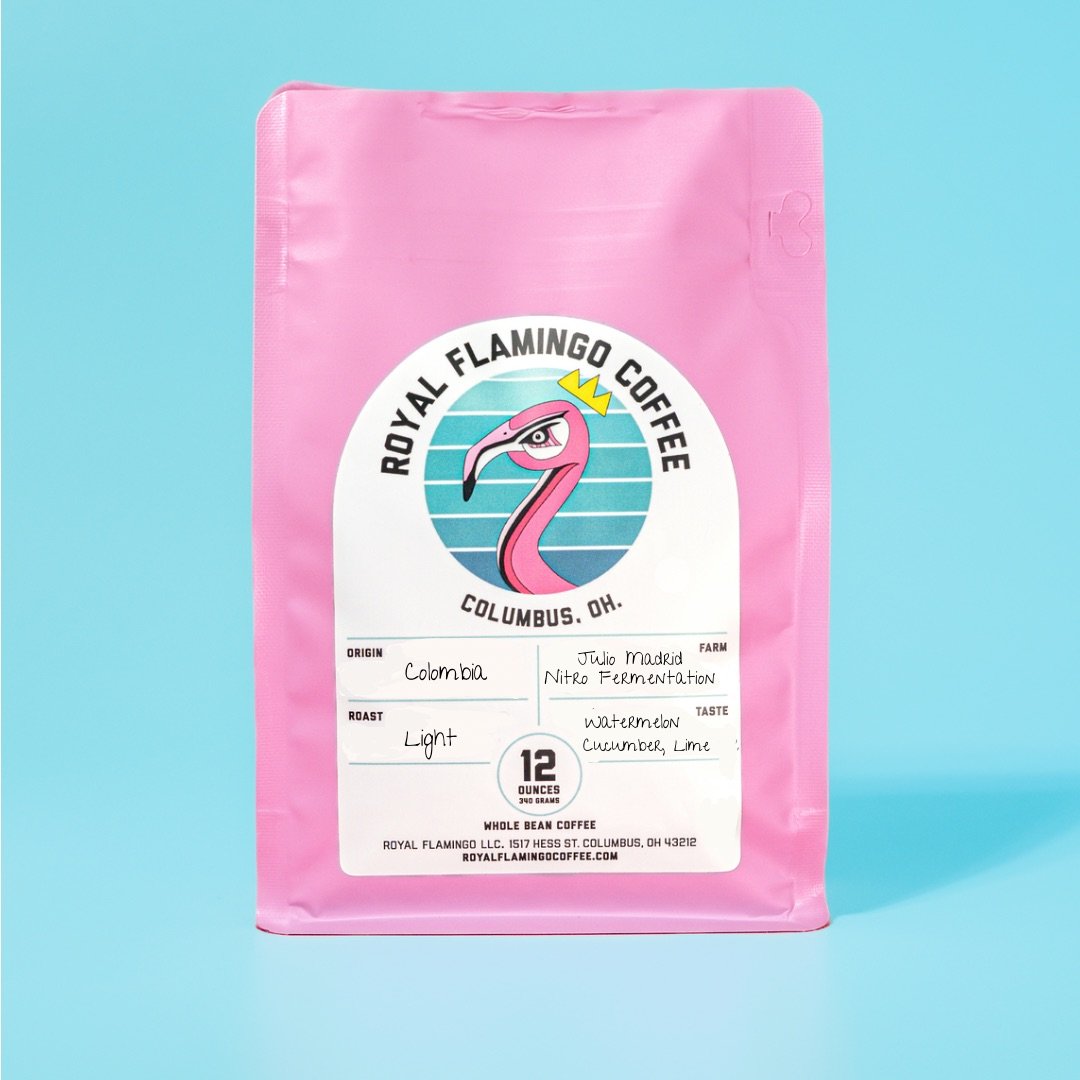 Image 1 of 1
Image 1 of 1


Colombia Nitro Fermentation
Tasting experience: Watermelon, Cucumber, Lime
Country: Colombia
Continent: South America
Farm/Lot: Finca Milan, Julio Madrid
Roast: Light (City)
Process: Nitrogen
Varietal: Caturra
Elevation: 1,400 - 1,700 MASL (meters above sea level)
Notes:
Julio Madrid’s nitrogen-fermented coffee from Finca Milan is a shining example of cutting‑edge anaerobic processing—creating a delicate yet fruit-forward cup that balances innovation and terroir. It’s a standout among fermented coffees, offering clarity, complexity, and a smoother, sweeter finish.
What is nitrogen fermentation?
• ✨ Embryonic stress: cherries are picked and held to naturally cycle around ~12 °C to boost internal fermentation potential .
• Pulping & inoculation: post-depulped beans are placed into a sealed bioreactor with starter cultures (yeast & bacteria) and fruit must .
• Nitrogen injection: the reactor is purged with N₂ to maintain strict anaerobic conditions; temperature, pH, and Brix are carefully tracked .
• Fermentation & drying: after 4–6 days, beans are solar/mechanically dried, rested for ~45 days, then hulled and bagged for export
Tasting experience: Watermelon, Cucumber, Lime
Country: Colombia
Continent: South America
Farm/Lot: Finca Milan, Julio Madrid
Roast: Light (City)
Process: Nitrogen
Varietal: Caturra
Elevation: 1,400 - 1,700 MASL (meters above sea level)
Notes:
Julio Madrid’s nitrogen-fermented coffee from Finca Milan is a shining example of cutting‑edge anaerobic processing—creating a delicate yet fruit-forward cup that balances innovation and terroir. It’s a standout among fermented coffees, offering clarity, complexity, and a smoother, sweeter finish.
What is nitrogen fermentation?
• ✨ Embryonic stress: cherries are picked and held to naturally cycle around ~12 °C to boost internal fermentation potential .
• Pulping & inoculation: post-depulped beans are placed into a sealed bioreactor with starter cultures (yeast & bacteria) and fruit must .
• Nitrogen injection: the reactor is purged with N₂ to maintain strict anaerobic conditions; temperature, pH, and Brix are carefully tracked .
• Fermentation & drying: after 4–6 days, beans are solar/mechanically dried, rested for ~45 days, then hulled and bagged for export
